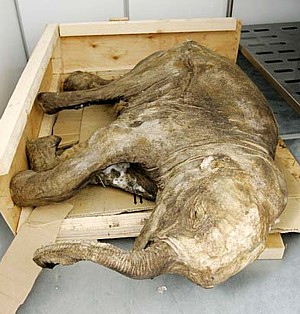Today I'm going to tell you all about the magnificent and misunderstood Great White Shark!
National Geographic Information
Here are some basic facts:
- Carcharodon carcharias is from the Greek meaning 'jagged tooth'.
- Males reach 3-4m long and are smaller than the Females which are usually 4-5m long.
- Maximum length for these sharks is a whopping 7m long!
- Live to be up to 30 years old.
- Reach sexual maturity at 4-13 years old.
- Females do not lay eggs, they are Viviparous, meaning they give birth to live young.
- Contrary to popular belief, Great White pups do not cannibalise each other in the uterus, although other species of shark have been known to.
- Pups are up to 1.5m in length when born and are able to hunt straight away.
- Have skeletons made of cartilage.
- Have about 3,000 teeth in rows which continually grow from the gums outward to replace any teeth lost in the front.
- Teeth are serrated on both edges and are about 5-7cm long.
- Great Whites can be found in most Temperate Coastal waters around the world, but their main population strongholds can be found in South Africa, North Eastern Pacific (California & Hawaii), North Western Atlantic (Japan), Mediterranean, Australia and New Zealand.
- World Populations is estimated to be around 5,000.
- Listed as Vulnerable in the IUCN Red List.
Feeding Behaviour
Great Whites are unusual in that when they are small (less than about 3.5m long) they feed only on fish or are Piscivorous. But when they are over 3.5m in length they hunt Marine Mammals (mainly seals). These sharks are ambush predators. When they spot their prey they dive underneath them and then launch themselves upward in a ballistic attack. As big as these sharks are they are capable of launching themselves fully out of the water.
While these sharks have been known to capsize and even jump into boats, it mostly out of curiosity that these animals come into contact with humans (or accidental in the case of boat jumping). Humans are generally considered too big for most Great Whites to predate upon, and it is often Bull and Tiger sharks (which are much more aggressive) that rack up the most human fatalities. I'm not saying that Great Whites aren't dangerous, they need to be respected and observed at a safe distance, and not blamed for things which are instinctual.
Migration and Breeding
Although Great Whites can be found in many places around the world (occasionally they are sighted in UK waters!), they don not usually tend to leave the place they were born, especially females. This is natal philopatry, it's the same instinct that brings sea turtles back to the beach where they hatched and house martins back to the same nest site. For instance, females in South African waters will migrate up and down the coast of Africa but they will rarely migrate to Australia as many males do. North East Pacific Great Whites will migrate with the seasons from California in December to Hawaii or open ocean until August when they return. A very remarkable Shark, known as Shark P12, went from the Cape in South Africa all the way to Western Australia and back again in 9 months! An incredible 20,000km! Sharks can be tagged and tracked electronically or they can simply be recognised by the unique shape if their dorsal fin using a specific program. This way individuals can studied unobtrusively.
Evolution
Great Whites are elasmobranchs (meaning their skeletons are made of cartilage, except for their teeth) fish belonging to the family Lamniformes (the Mackeral Sharks) which include Sand Tiger Sharks, Salmon Sharks, Threshers, Megamouths Basking Sharks and the Great White's closest living relatives: Mako Sharks. It is thought that Great Whites diverged from other Carcharodons approximately 11 million years ago during the Miocene epoch of the Quaternary Period shortly after Seals evolved and other marine mammals such as Whales and Dolphins began to diversify. There is an ongoing debate as to how closely related the Great White and the Megalodon actually are, while there are similarities in the shape of the teeth, the more popular theory is that the Great White is actually more closely related to the extinct Giant Mako Shark. Unfortunately with only teeth to compare both relations will remain a mystery.
I hope I have shed some light on these awesome animals! Here are some organisations that are monitoring Great Whites and other species, their websites are worth a look!
There are also some great research papers which go into much more detail:
- Bonfil, R. et al. Transoceanic migration, spatial dynamics, and population linkages of white sharks 2005. Science 310, Pages 100-103.
- Gubili, C., et al. Antipodean white sharks on a Mediterranean walkabout? Historical dispersal leads to genetic discontinuity and an endangered anomalous population 2011. Proceedings of the Royal Society B-Biological Sciences 278, pages 1679-1686.
- Jorgensen, S.J., et al. Philopatry and Migration of Pacific white sharks 2010. Proceedings of the Royal Society B-Biological Sciences 277, Pages 679-688.
- Martin, R.A., et al. Hunting patterns and geographic profiling of white shark predation 2009. Journal of Zoology 279, pages 111-118.
- Nyberg, K.G., Ciampaglio, C.N. & Wray, G.A. TRACING THE ANCESTRY OF THE GREAT WHITE SHARK, CARCHARODON CARCHARIAS, USING MORPHOMETRIC ANALYSES OF FOSSIL TEETH 2006. Journal of Vertebrate Paleontology 26, Pages 806-814.
- Pardini, A.T., et al. Sex-biased dispersal of great white sharks - In some respects, these sharks behave more like whales and dolphins than other fish 2001. Nature 412, pages 139-140.
- Velez-Zuazo, X., & Agnarsson, I. Shark tales: A molecular species-level phylogeny of sharks (Selachimorpha, Chondrichthyes) 2011. Molecular Phylogenetics and Evolution 58, Pages 207-217.
See you next time!




